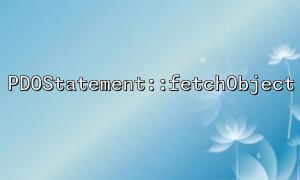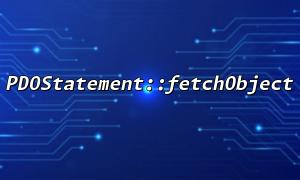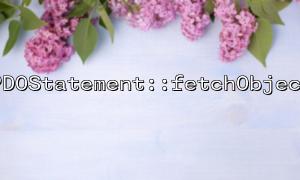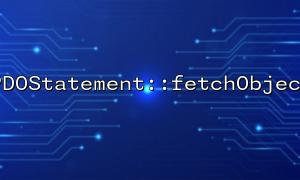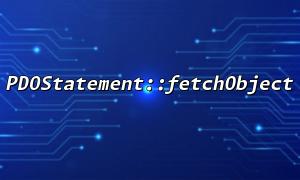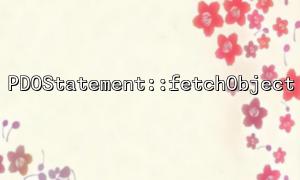In PHP development, PDO is a popular and flexible way to access databases. Especially when data consistency is needed, the Transaction mechanism is particularly important. At the same time, when we need to get query results in the form of objects, the PDOStatement::fetchObject function provides great convenience.
This article will explain in detail how to use the fetchObject method to obtain objects in the database in combination with transaction processing.
Transaction is an important concept in database management, and is usually used to ensure that a set of operations is either successful or all fails. Typical application scenarios include fund transfer, order processing, etc.
In PDO, transaction processing is usually performed through the following three methods:
beginTransaction() starts a transaction
commit() commit() commit() commit transaction
rollBack() rollback transaction
fetchObject is a method provided by PDOStatement , which returns the current row as an object, rather than the traditional array form. This approach is more suitable for the OOP style and the code is easier to maintain.
Usage example:
$object = $statement->fetchObject();
echo $object->column_name;
Below we use a complete example to illustrate how to use fetchObject in transaction processing.
Suppose there is a user table with the structure as follows:
| id | name | |
|---|---|---|
| 1 | Alice | [email protected] |
| 2 | Bob | [email protected] |
We want to query the user with id = 1 in the transaction and get the data in an object way.
<?php
// Database configuration
$dsn = 'mysql:host=localhost;dbname=testdb;charset=utf8mb4';
$username = 'dbuser';
$password = 'dbpass';
try {
// create PDO Example
$pdo = new PDO($dsn, $username, $password, [
PDO::ATTR_ERRMODE => PDO::ERRMODE_EXCEPTION
]);
// Start a transaction
$pdo->beginTransaction();
// Prepare the query statement
$stmt = $pdo->prepare('SELECT * FROM users WHERE id = :id');
$stmt->execute(['id' => 1]);
// use fetchObject Get results
$user = $stmt->fetchObject();
if ($user) {
echo "Username: " . htmlspecialchars($user->name) . "<br>";
echo "User email: " . htmlspecialchars($user->email) . "<br>";
} else {
echo "The user was not found。";
}
// Submit transactions
$pdo->commit();
} catch (Exception $e) {
// An exception occurred,Roll back transactions
$pdo->rollBack();
echo "An error occurred: " . htmlspecialchars($e->getMessage());
}
?>
Exception handling : In a transaction, you must ensure that any exception can be caught and the transaction can be rolled back to avoid data corruption.
Security : Parameter binding ( bindParam or array parameter transfer) can effectively prevent SQL injection attacks.
Output security : Using htmlspecialchars can avoid the risk of XSS attacks.
Using PDOStatement::fetchObject in transaction processing can make data access more in line with object-oriented programming habits, and can also improve the readability and maintainability of the code. Mastering this technique will make your PHP project more robust and elegant.
If you want to learn more about more advanced usage of PDO, you can visit https://gitbox.net/docs/pdo for detailed information.
Related Tags:
PDOStatement